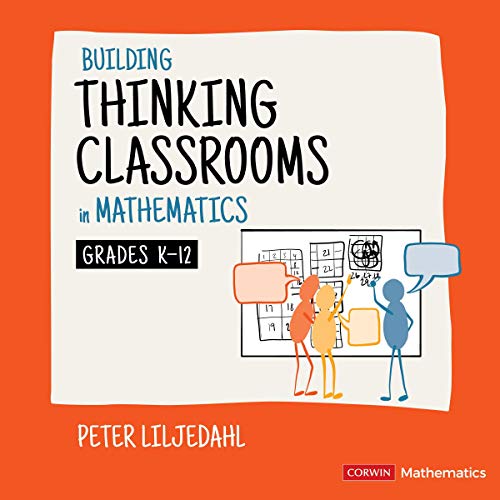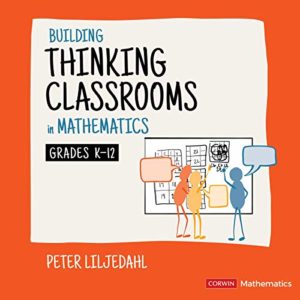

Yes, a best practices book can be a page-turner. I am not a math teacher, and I would say I did not have a pleasant experience with math in my youth. However, what I was reading here really resonated with me, and the recommendations for enhancing learning are not isolated to mathematics. The reader’s attention is drawn to practices that, at times, seem minor but can have big impacts on learning. Consistent with the author’s notion of encouraging thinking, the material is presented in such a way that it provokes curiosity. Amazingly simple questions spark interest: where should students practice math: whiteboards on the wall, whiteboards on the table, posterboards, or notebooks? He takes us through the investigation predicting our thinking and ending each section with frequently asked questions that reveal he has had plenty of field experience with teachers and skeptics.
Each chapter engages the teacher’s likely goals and a comparison to student goals. Throughout the book, I found myself in the narrative of each giving me insight into my learning and my teaching. Take group work that is central to every active classroom: when we are instructors, we plan groupings carefully; but when we are students, we often have another interpretation of instructor efforts in mind, and we have our own social goals. Liljedahl brings these into some alignment, so both student and teacher work toward deeper thinking. As the author points out, students and teachers love to think and think deeply when the conditions facilitate and don’t interfere or distract.
While each chapter ends with a summary of the main points in the form of macro and micro moves that we can take as educators, the meat of the chapters offers valuable context and back up the claims in ways that allow us to spread the knowledge captured in these pages among our peers. I tried to critique every suggestion, but the author was particularly good at anticipating this doubt, and those points not addressed in the main narrative were given direct attention in the frequently asked questions sections at the end of each chapter, a part that I particularly enjoyed.
But best practices mean little in standardized systems that constrain our ability to create — “There is no more time. There is no room to add more. ” Stop fretting, evidence is loaded into these pages that refute that the teacher is too constrained to enhance learning in these ways. The author breaks down curricular time into minute-by-minute activities demonstrating that these practices enable efficient use of classroom time. Other concerns about making sure you meet curricular demands are also addressed. Not all activities are curricular and that’s ok; instead, they often prepare the learner to do curricular activities effectively. Constrained by finance? Alternatives abound and are supported by previous implementation and testing. If you have reasons to not enhance student learning as suggested, be prepared to have those concerns alleviated.
So the book is useful for teachers, but what about the researcher who yearns for an academic discussion. If this is you, you also have something great to learn on these pages. This book is an illustrative guide of one excellent way to do great learning science research. The researcher will learn from Liljedahl’s communication and experience with teachers. But will also be tickled by the attention to detail and nuance that is enjoyable in all scientific endeavors. Science is about seeing and noticing and letting the data teach us. This is what you will find here making it an excellent lighthearted college text for preparing teachers or researchers.
Often an education book offers much for the reader as both a teacher and a learner. This book is no exception. Take some of these practices to your own learning opportunities, places of work, research labs, and faculty meetings. Enjoy thinking deeply with Liljedahl.
Liljedahl, P. (2020). Building thinking classrooms in mathematics, grades K-12: 14 teaching practices for enhancing learning. Corwin Press




